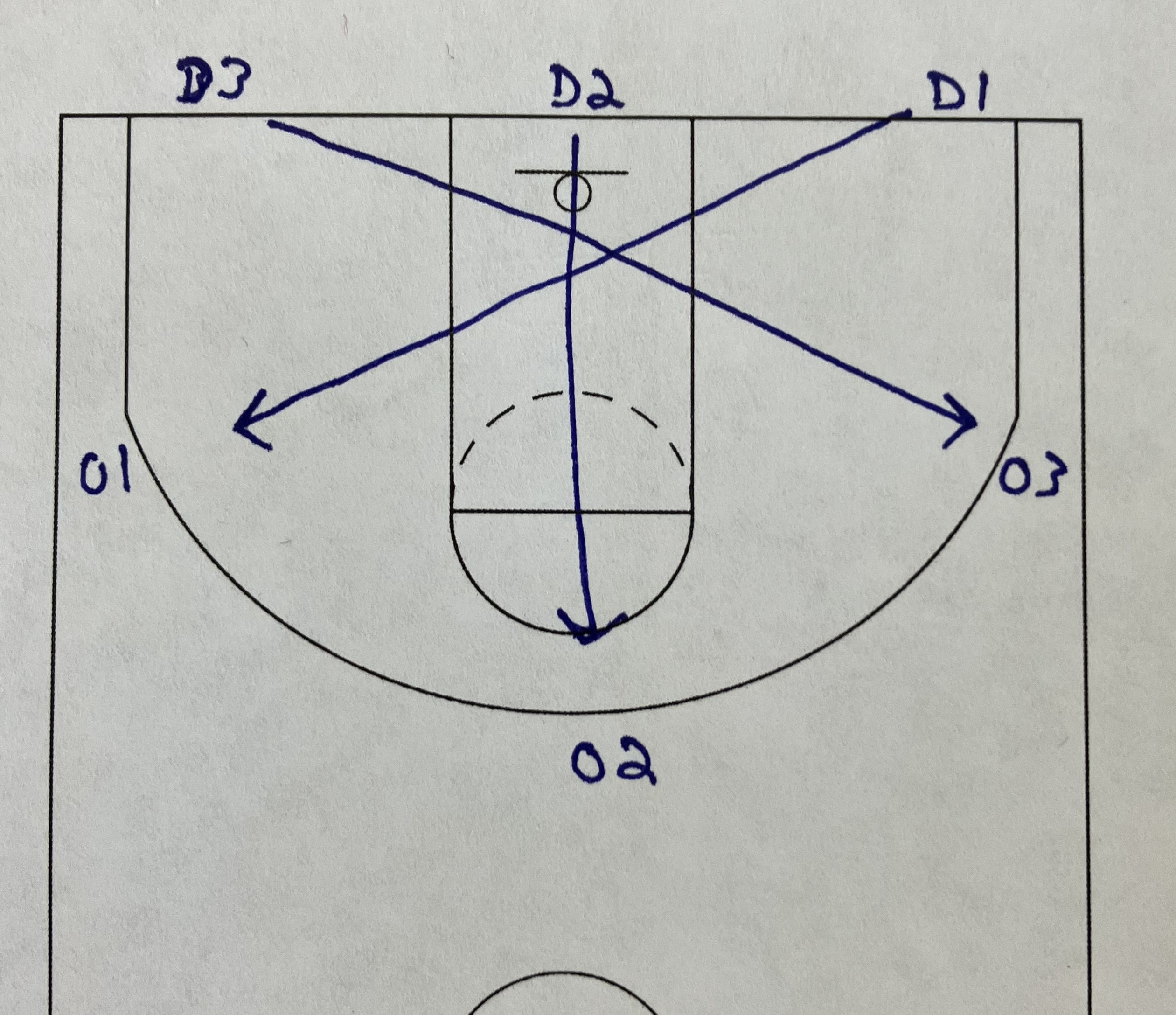In a perfect world all defenses are going to be set to match up with the offense as they are coming down the floor. I would assume all coaches train and work on 5 on 5 defense. The defense is set and the offense tries to score on the defense. However, any coach that has been coaching for any length of time knows the ability to match up properly on defense does not always occur.
How does a team work on those times where the defense is at a disadvantage and in a scramble mode trying to stop the offense? I like to do drills in practice to try and simulate scenarios where the defense is at a disadvantage. Playing defense a defender short in practice gives the players a situation where they have to really scramble to try and get a defensive stop.
Along with learning how to scramble on defense, the defenders will also start talking more on defense because of the disadvantage. I struggle with getting players to talk on defense. This 5 on 4 drill forces the defenders to have to communicate and talk to have any success. While communication is not the primary focus of the drill, it is a very nice secondary result of the drill. After running this drill every practice for a week, the communication of the players on defense improves a lot when playing 5 on 5.
The key for the defense is to quickly assess the offense and figure out the 4 spots for the defenders. The four spots the defense has to fill are…
- The on the ball defender.
- The one pass away defender.
- The defender taking two offensive players.
- The defender taking the last player on offense.
Sometimes these four spots are easy to figure out and sometimes they can be hard for the defense to figure out which player is filling which spot. This is where natural communication and talking is going to take place. The defenders will start to talk so every defender knows what they are doing in relation to every other defender.
The communication between defenders has to stay constant because with each pass the defenders are changing which the 4 spots they are in. This constant change forces the defenders to stay moving and talking. At first, the defense is going to be bad as the players start to learn how to play in a constant scramble mode.
Once they start figuring out how to play in scramble mode defense, the learning curve happens quickly. The defense will look bad and then all of a sudden it clicks and the defense looks good. In my experience, it is not a slow progression but a steep jump from bad to good. As a coach, give this drill some time because it will take some time for the players to learn how to play in a constant scramble mode. Once it clicks, the transition from practice drill to game situation is very good.
The drill starts with 5 offensive players and 4 defenders. The offense can use any plays they want.
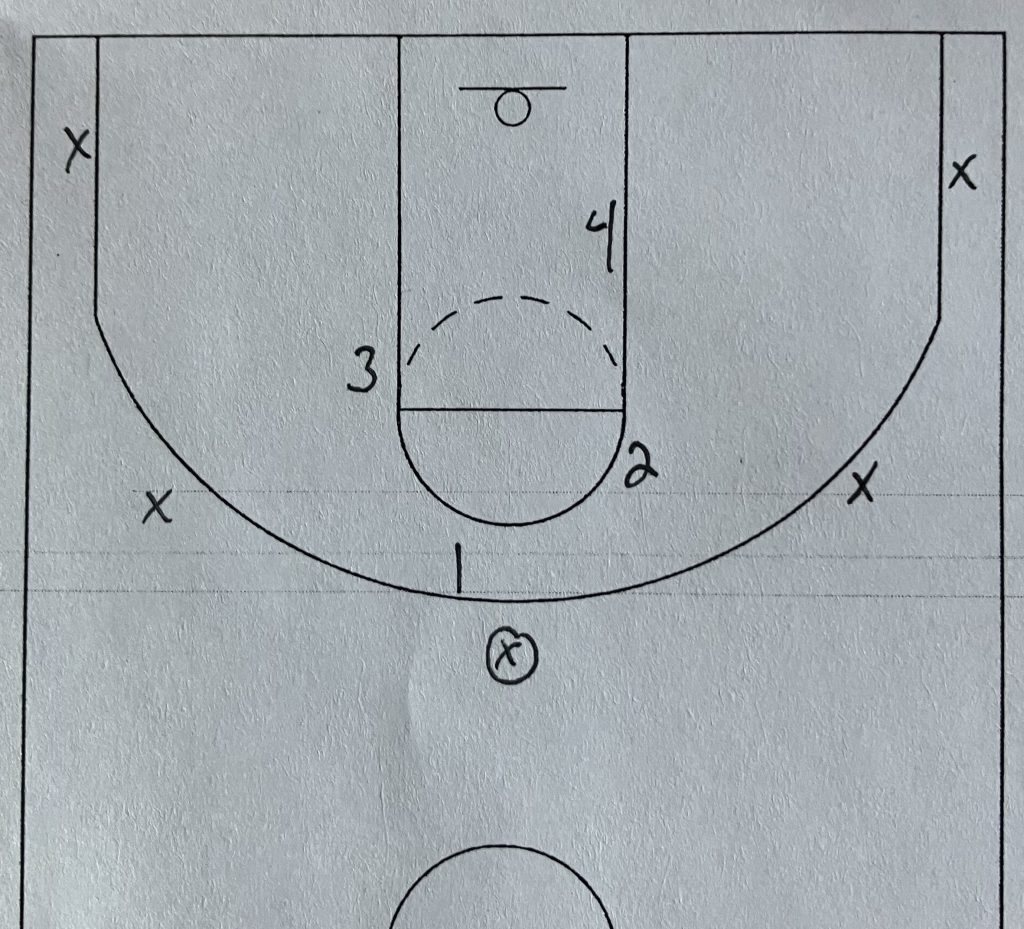
The defense will have to match up as best they can with the offense. In the diagram above, the point(1) guards the ball at the top of the key. The guard(2) guards the player on their wing. The forward(3) is taking the two players. The forward(3) will closeout on any pass to the left side of the offense. The big(4) is taking the last offensive player in the right corner.
On every pass the defense will have to adjust. And the adjustments are not always going to be the same. The defenders may cross and move up and down and left and right. They are going to try and analyze the offense after each pass quickly to get into as good of a defensive positions as possible.
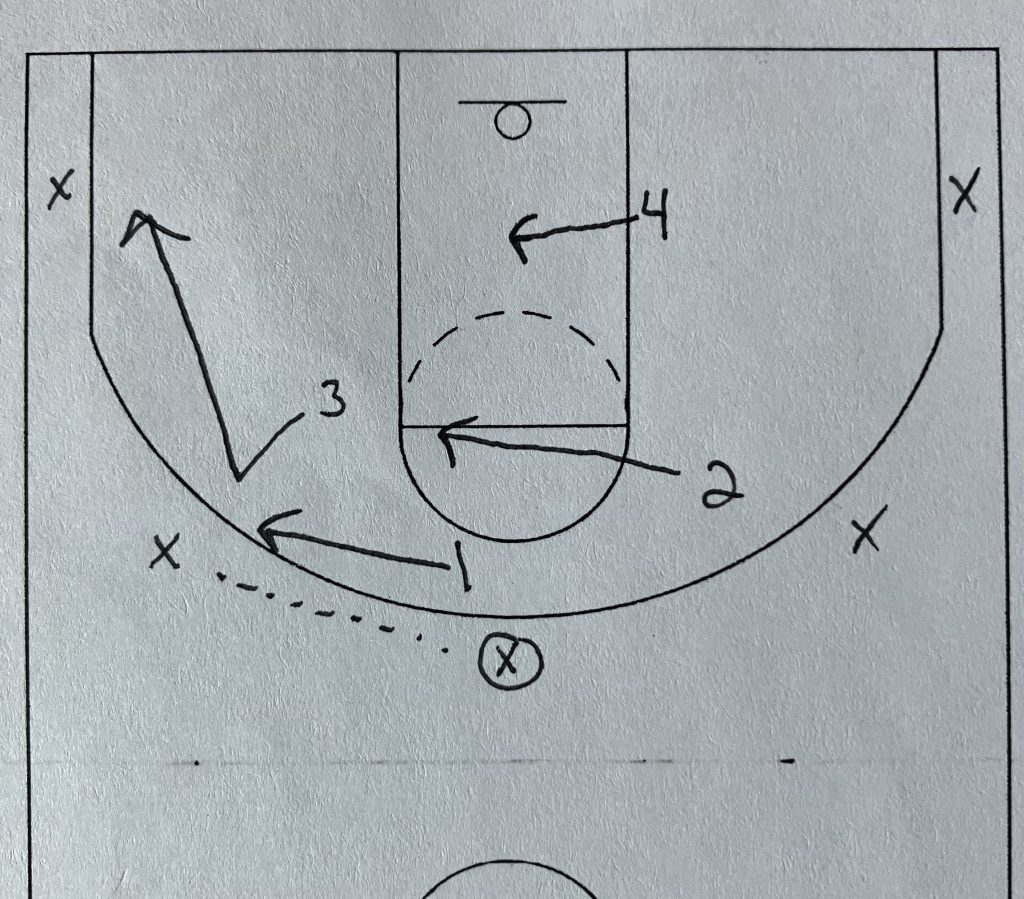
On a pass to the left wing, the forward(3) does a closeout and drop. The point(1) follows the pass to be the on the ball defender. The guard(2) and big(4) rotate to the middle. This is where communication is key. The guard(2) or big(4) could be taking the two offensive players. The guard(2) could rotate up higher to the top of the key leaving the big(4) taking the two offensive players on the backside. Or the guard(2) could play back a little bit and take both the top of the key and wing offensive players leaving the big(4) guarding the corner player.
This is why I like the drill. The players are having to analyze and communicate what they are doing and who they are guarding continuously. There is no set way on how to rotate. It is about having the players learn how to play in a scramble mode. Things are not going well for the defense and they have to work on still trying to get a stop. These rotations are not black and white but a bunch of shades of grey.
For instance, the same starting wing pass could have the forward(3) closeout and guard the ball. The point(1) could stay at the top of the key. The big(4) could move across the floor and guard the ballside corner offensive player. That leaves the guard(2) guarding the two backside players all by themselves. There is not a “right” way and “wrong” way. It is all about the defenders working and adjusting with each pass to either get a stop or make the offense take as much time as possible to get a shot.
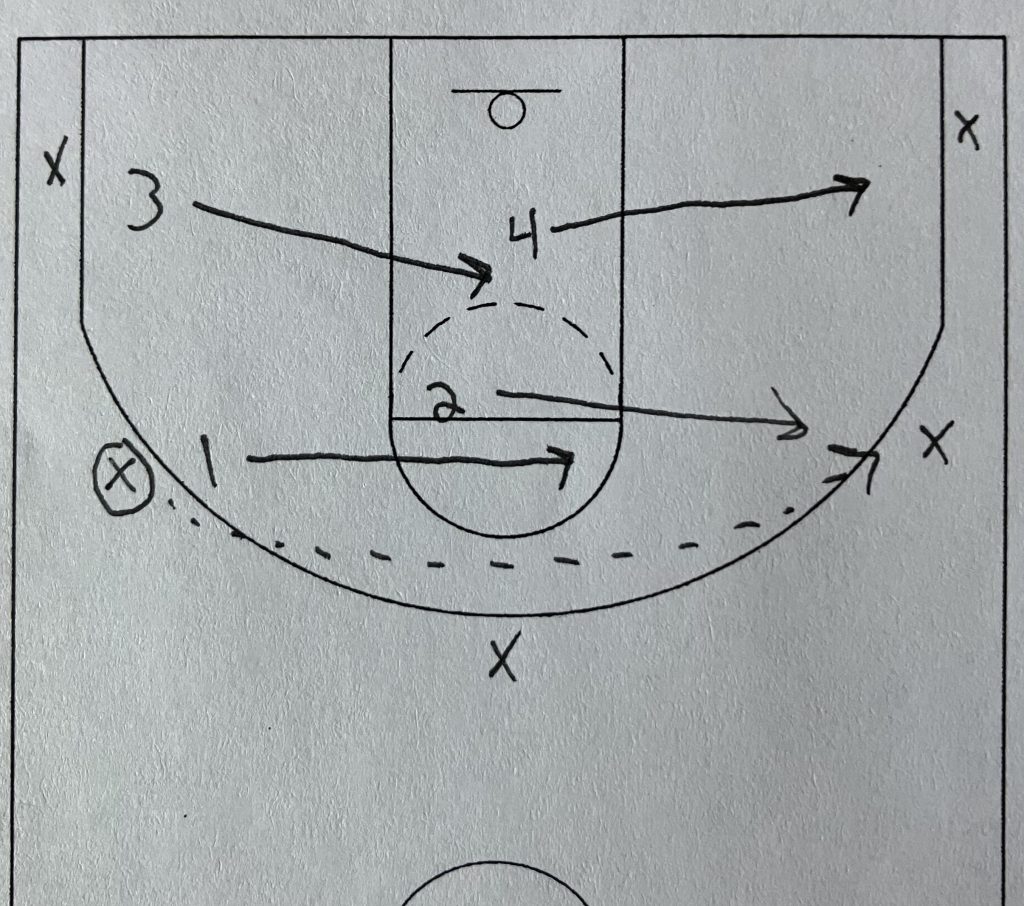
Continuing with the diagram above, on a skip pass, the guard(2) closes out to the wing. The big(4) takes the corner. The point(1) and forward(3) sprint to midline and decide who is guarding one and who is guarding two. This communication must occur between the point(1) and forward(3). The communication will prevent both of them either closing out to the ball or neither closing out to the ball.
The defense being a player down already, two players cannot be guarding the same offensive player. That essentially gives the offense a 5 on 3 situation which leads to easy open shots. Likewise, being a player down the defense must not let the ball be the offensive player unguarded. This gives an open lane to the basket and a serious defensive breakdown.
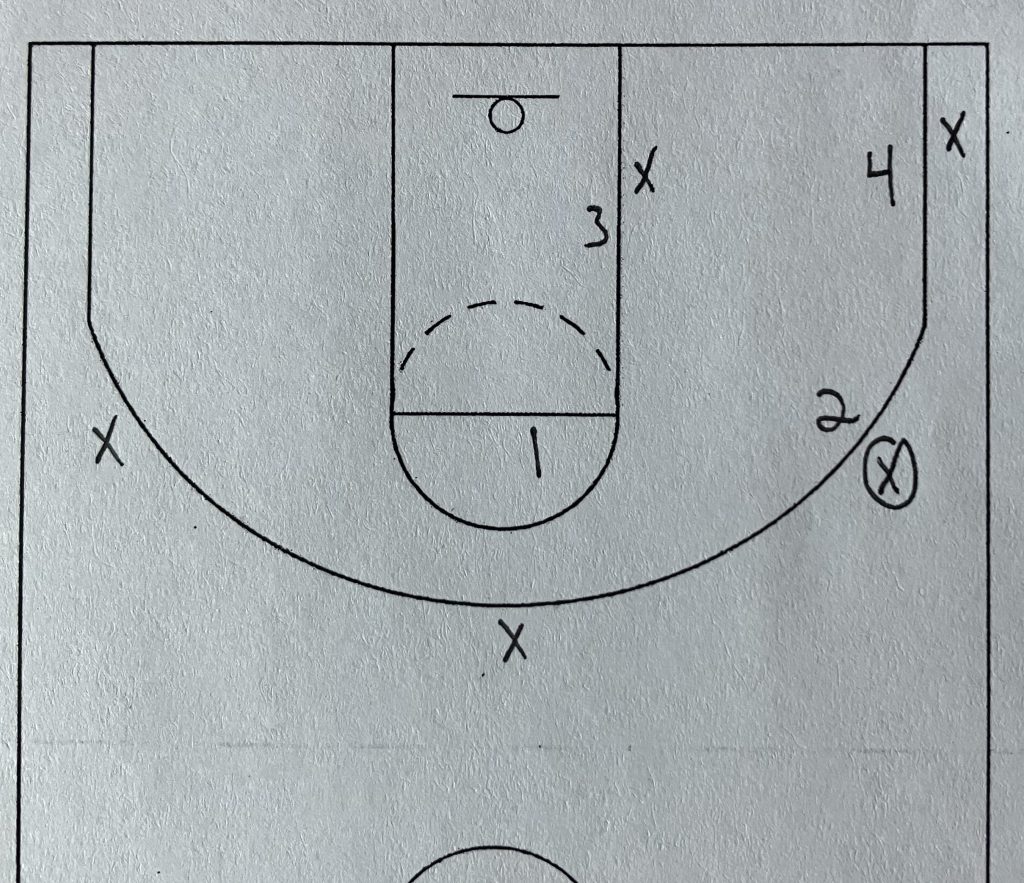
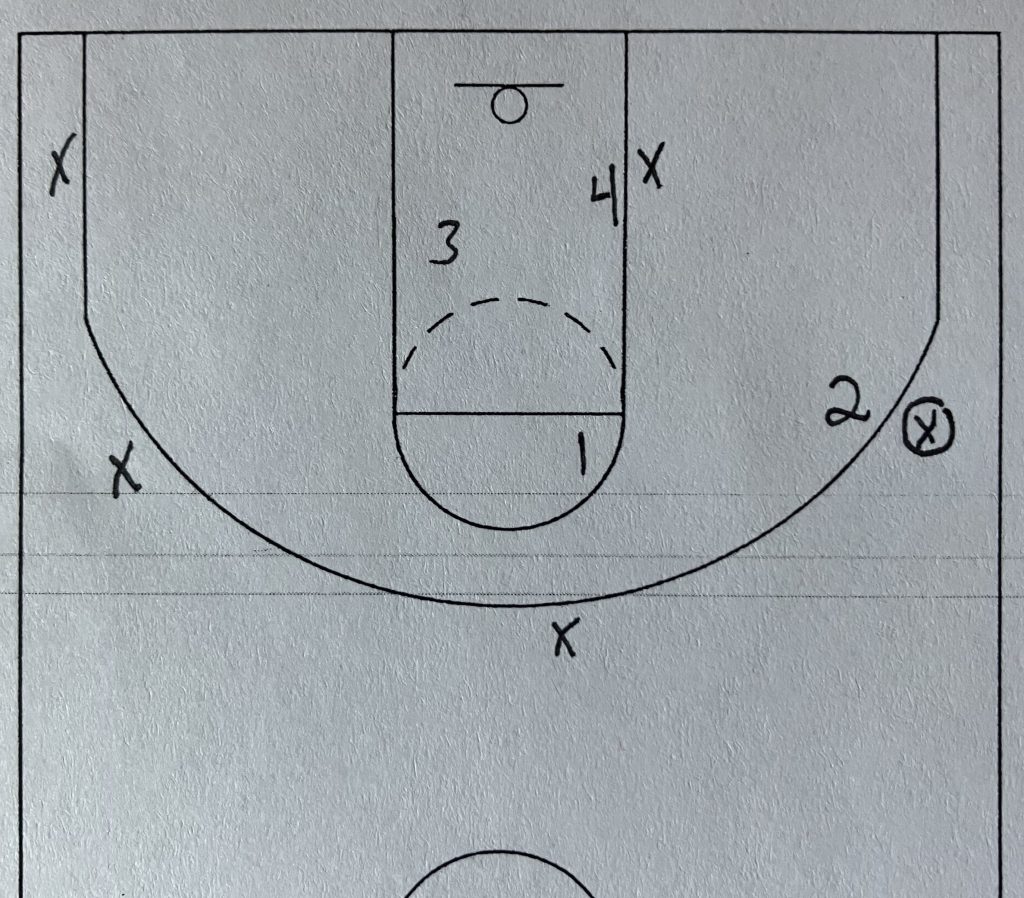
A cutter is also going to change the defense a lot. On the right, the backside corner cuts to the ballside block. The forward(3) has to guard them because of their location next to the basket. The point(1) is now guarding two with the top and wing offensive players.
The left diagram has the ballside corner cut to the block. This keeps the big(4) on the block. The point(1) can rotate up to the top of the key player because they are the only offensive player one pass away. Now the forward(3) has the two offensive players on the backside.
The offense could cut where they are moving from one diagram to the other. They could cut both baseline players to the ball or away from the ball. Simple cuts can have the defense changing their responsibilities. This is where communication is so dependent on the success the defense can have. Once the players start talking, then they will continue to talk even when moving back to 5 on 5.
This 5 on 4 drill will improve your man to man defense. This drill works on scramble mode scenarios. Transition defense becomes better. Rotational defense becomes better. And 5 on 5 defense will improve as well. The players will start to see the court and offensive players better. They will start to anticipate passes and cuts better.
This is one of those defensive drills that I am using at least once a week and sometimes every day during a week. Defense is not always going to be perfect. The ability to play good defense when things are not working as they are supposed too will help to prevent some of those easy baskets an opponent can get when things go poorly for a defense.


